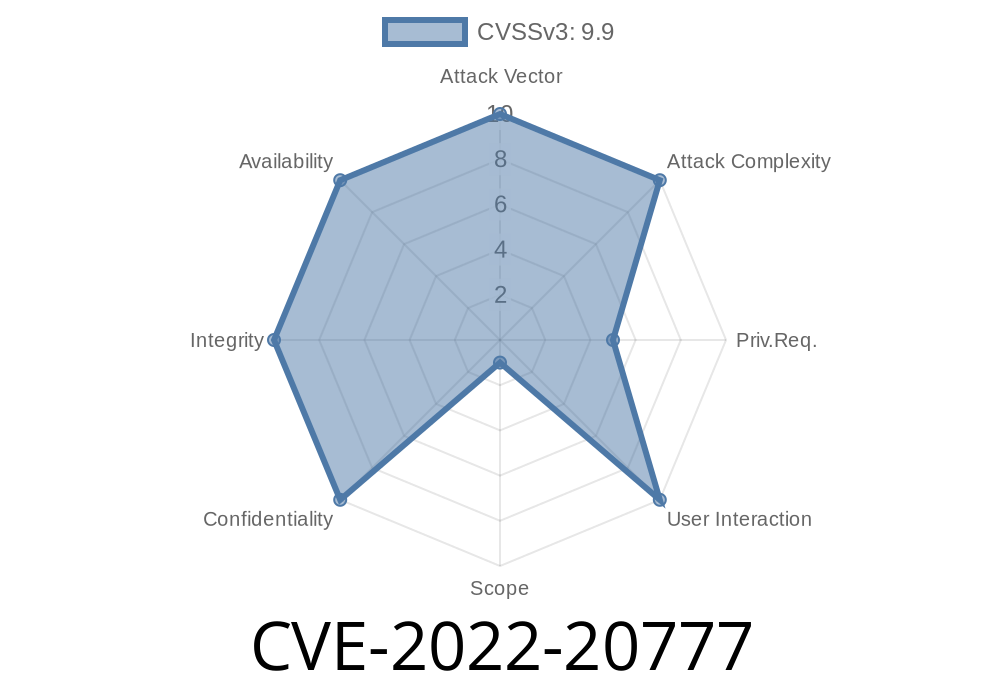Recently, the cybersecurity community has raised concerns about multiple vulnerabilities found in Cisco Enterprise Network Functions Virtualization Infrastructure Software (NFVIS). These vulnerabilities, grouped under the Common Vulnerabilities and Exposures (CVE) identifier - CVE-2022-20777, could potentially allow an attacker to escape from the guest virtual machine (VM) to the host machine, inject commands that execute at the root level, or leak system data from the host to the VM. In this in-depth analysis, we will cover the main aspects of these vulnerabilities, including their technical details, consequences, and possible countermeasures.
NMFDIS covered by the CVE-2022-20777 advisory includes three primary vulnerabilities
1. Guest VM Escalation to Host (Path Traversal and Directory Traversal) - This vulnerability can be exploited by an attacker to load malicious code from the guest VM onto the host system, leading to unauthorized access and control over the host machine.
2. Remote Command Injection - An attacker can exploit this vulnerability to inject and execute malicious code with root-level privileges on the host machine, leading to a complete compromise of the system.
3. Information Leakage - The third vulnerability can be exploited to leak sensitive system data from the host machine to the guest VM, which may include user credentials and other system configuration settings.
For more detailed information on these vulnerabilities, you can refer to the original Cisco advisory notice here.
Exploit Details and Code Snippet
The following exploit code snippet demonstrates how an attacker might exploit the Guest VM Escalation to Host vulnerability (Path Traversal and Directory Traversal):
import os
import shutil
# The attacker's malicious payload, for example - a shell script.
MALICIOUS_PAYLOAD = "malicious_payload.sh"
# The host's shared directory path from where the payload shall be loaded
SHARED_DIR = "/Host_Shared_Directory/"
# Guest VM's local directory
GUEST_DIR = "/tmp/"
# Path traversal using relative path
TRAVERSAL_PATH = "../../../../../Host_Shared_Directory/{}".format(MALICIOUS_PAYLOAD)
# Copy malicious payload from guest VM to host machine
shutil.copyfile(os.path.join(GUEST_DIR, MALICIOUS_PAYLOAD), os.path.join(SHARED_DIR, TRAVERSAL_PATH))
Upon execution, the malicious payload will be copied onto the host system, potentially leading to unauthorized control of the host machine.
Mitigation and Countermeasures
Cisco has released software updates addressing these vulnerabilities. It is highly advisable for users of the affected products to review the Cisco Security Advisory notice and apply the appropriate security patches as soon as possible to prevent potential exploitation. The advisory also recommends monitoring system logs and network traffic for any signs of suspicious activity that may indicate an intrusion attempt.
In addition to applying security patches, other countermeasures against potential exploits of these vulnerabilities include:
Limiting user access on the host and guest VMs to only those users who require it for their job.
2. Enforcing strong password policies and multi-factor authentication (MFA) to prevent unauthorized access.
Regularly monitoring your infrastructure for known vulnerabilities and applying patches promptly.
4. Implementing strict network segmentation or sandboxing to separate guest VMs, limiting the potential impact of a breach.
Conclusion
In conclusion, CVE-2022-20777 comprises several severe vulnerabilities affecting Cisco Enterprise NFV Infrastructure Software (NFVIS) that could potentially allow an attacker to execute malicious code with root-level privileges, escape guest VMs to the host machine, or compromise sensitive system data. To maintain robust cybersecurity, it is crucial for affected users to apply the necessary security updates and implement additional countermeasures to protect both their host and guest systems from potential exploitation.
Timeline
Published on: 05/04/2022 17:15:00 UTC
Last modified on: 05/11/2022 18:22:00 UTC
